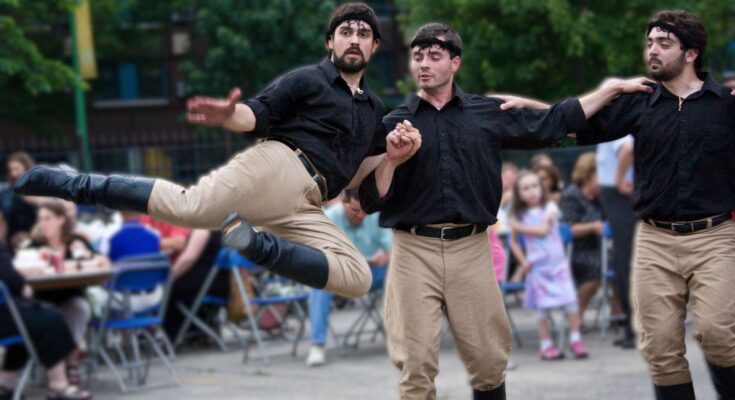Pentozali, or Pentozalis, is a gravity-defying traditional dance from the Greek island of Crete, where traditional ways of life still hold strong in many areas of the island.
There are many traditions that characterize the different regions of Greece, as well as its people and culture.
Culinary traditions go hand in hand with folkloric expressions that represent the soul and the love of the people for their land. Among them, dance and music have a prominent place.
The symbolism behind the name “Pentozali”
The dance’s name is steeped in symbolism. Officially, it comes from the combination of the words five (penti) and step (zalos, Cretan dialect for step), therefore the dance can be translated as “five steps.”
Additionally, the word zali can also stand for “dizziness,” indicating a dance that would make dancers five times dizzy.
The Pentozali also symbolizes the fifth zeal (that is, the step), that stands for the fifth attempt of the Greeks to liberate themselves from the Ottoman Turks.
The ten basic steps of the dance are in memory of October 10, 1769, when it was danced for the first time in Anopolis in the region of Sfakion upon the decision of the Sfakians to rebel against the Ottomans.
The Pentozali is a purely martial dance, performed only by men, that declares the uprising, heroism, and hope of the Cretans.
Some scholars even link the origins of the dance to the ancient Minoans, who danced with similar steps and movements in their own martial dance.

The traditional dance of Crete
Pentozali is a vibrant dance with high jumps. Although there are a number of set steps that all dancers follow, there is also room for creativity and improvisation during dances.
All dancers stand in a circle, holding each other by the shoulders; however, they dance at different speeds, depending on the pace of the music, which changes rapidly.
The first dancer of the row is the one in charge of improvising his jumps and acrobatic movements.
He holds the hand of the next dancer while the remaining dancers still hold each other by their shoulders.
This second dancer acts as a support pole, remaining as rigid as possible so as to allow the first dancer to perform his acrobatic feats.
The first dancer moves back to the back of the line once his steps are over.
Men dancing the pentozali usually wear the traditional Cretan dress, consisting of a blue, brown or black “vraka” which is a type of trouser that is tight around the waist but loose in the hips.
Normally the Cretan stivania, or boots, are also part of the costume.
The music is mainly instrumental, though there may be lyrics accompanying it. Usually, the tune is played by a Cretan lyra along with a lauto, played in a percussive way.
The lyre player is in charge of directing the dance; he improvises as a way to tell the first dancer to do the same. He resumes the main time when the first dancer has to give his place to the next one.
Take a look at this video portraying a pentozali danced by the Cretan group Laographikos Omilos Chanion, courtesy of Alexandros Katsikandarakis.



